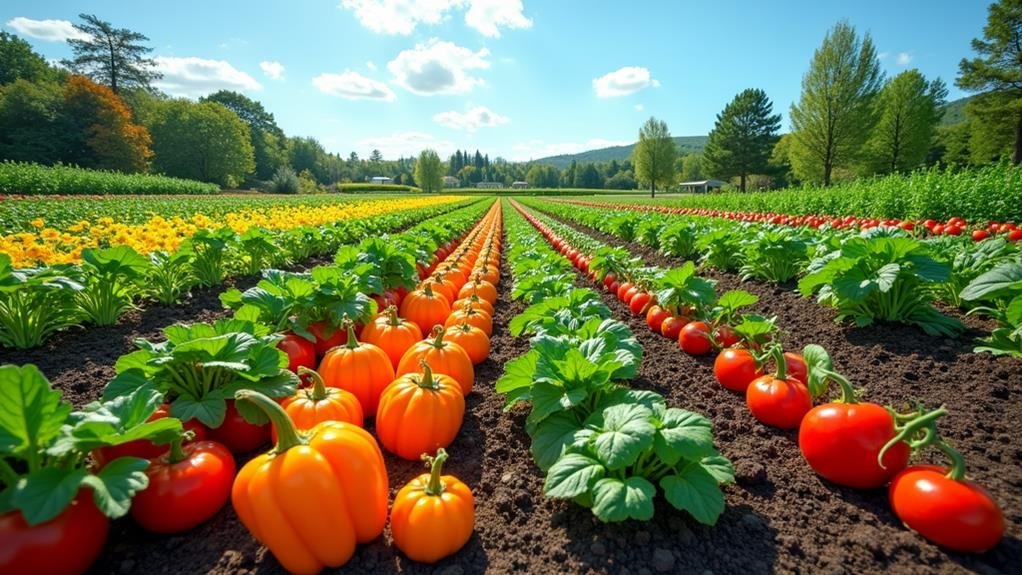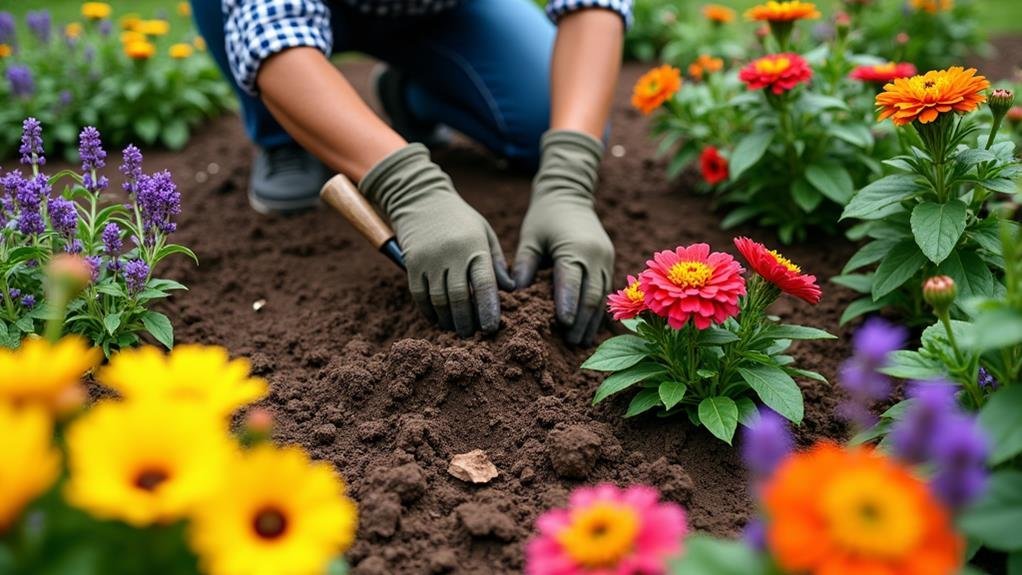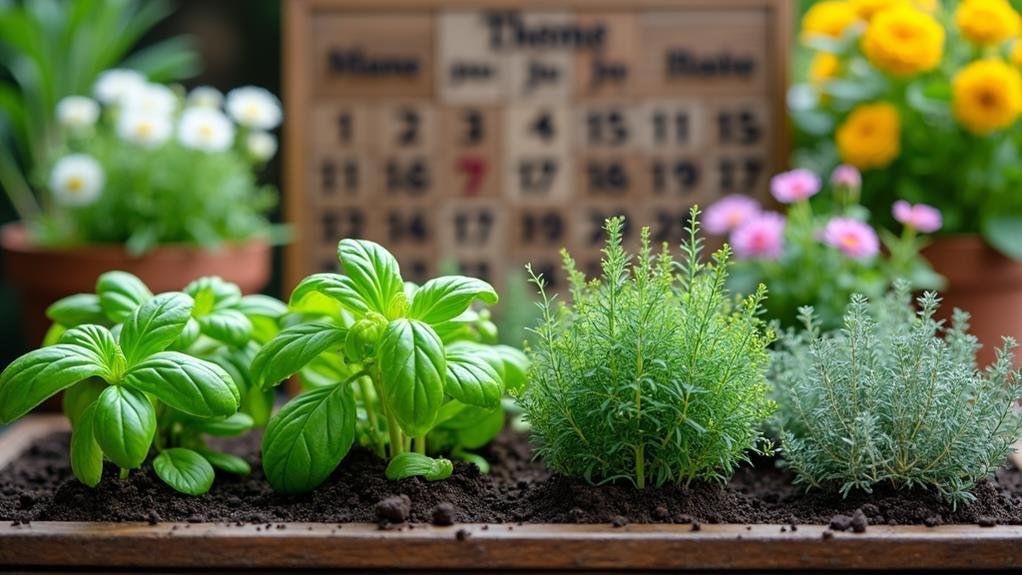When you plan your vegetable garden by season, you're not just following a calendar; you're aligning with nature's rhythms. Each vegetable thrives under specific conditions, and knowing when to plant can greatly impact your yield and plant health. By recognizing the benefits of seasonal planting, you can cultivate a garden that stands resilient against pests and adapts to climate shifts. But what exactly should you consider to maximize your garden's potential? Let's investigate the essential factors that will help you make informed decisions for your garden's success.
Understanding Seasonal Growth Cycles
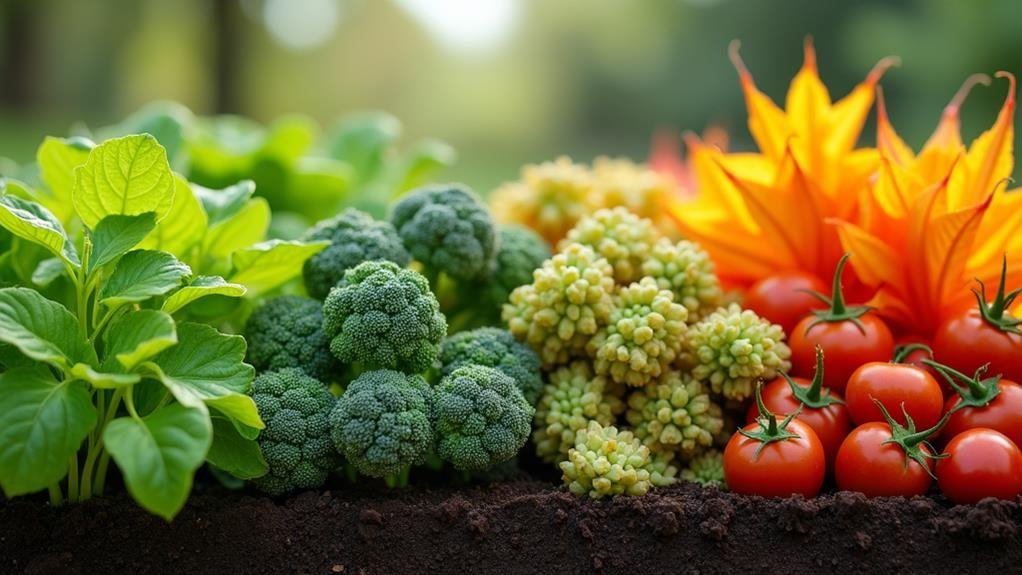
Understanding the seasonal growth cycles of vegetables is vital for a thriving garden. Each vegetable has its own timeline, which dictates when it should be planted, how long it takes to mature, and when it's ideal for harvest. By recognizing these cycles, you can maximize your garden's productivity and guarantee you're planting at the right time.
Spring is typically the season for planting cool-weather crops like lettuce and peas. As temperatures rise in summer, you'll find that warm-weather vegetables, such as tomatoes and peppers, flourish. However, it's important to keep in mind that some crops, like certain squash varieties, can be planted later in the season to take advantage of the warm days of late summer.
In fall, you can enjoy the harvest of your late-summer crops, but it's also a great time to plant overwintering vegetables, like garlic. Understanding these cycles not only helps in planning your planting schedule but also aids in crop rotation, improving your soil health.
Keep an eye on your local climate, as it can greatly affect growth cycles. The more you know, the better your garden will thrive!
Benefits of Seasonal Planting
Seasonal planting offers numerous advantages that can greatly boost your gardening success. First, it allows you to take full advantage of the natural growing conditions. By planting according to the seasons, you guarantee that your vegetables thrive in the ideal temperatures and light levels. This means healthier plants and a more abundant harvest.
In addition, seasonal planting helps you manage pests and diseases more effectively. Certain pests are more prevalent during specific seasons, so timing your planting can reduce their impact. When you stagger your planting throughout the year, you also create a more diverse environment, which can deter pests from settling in.
You'll also find that seasonal planting improves soil health. By rotating your crops and giving the soil a break with cover crops or fallow periods, you can prevent nutrient depletion and promote beneficial microorganisms. Furthermore, this approach can reduce the buildup of harmful pathogens in the soil.
Lastly, seasonal planting encourages you to stay engaged with your garden year-round. It keeps things fresh and exciting, as you experiment with different vegetables and techniques as the seasons change.
Choosing Vegetables for Each Season
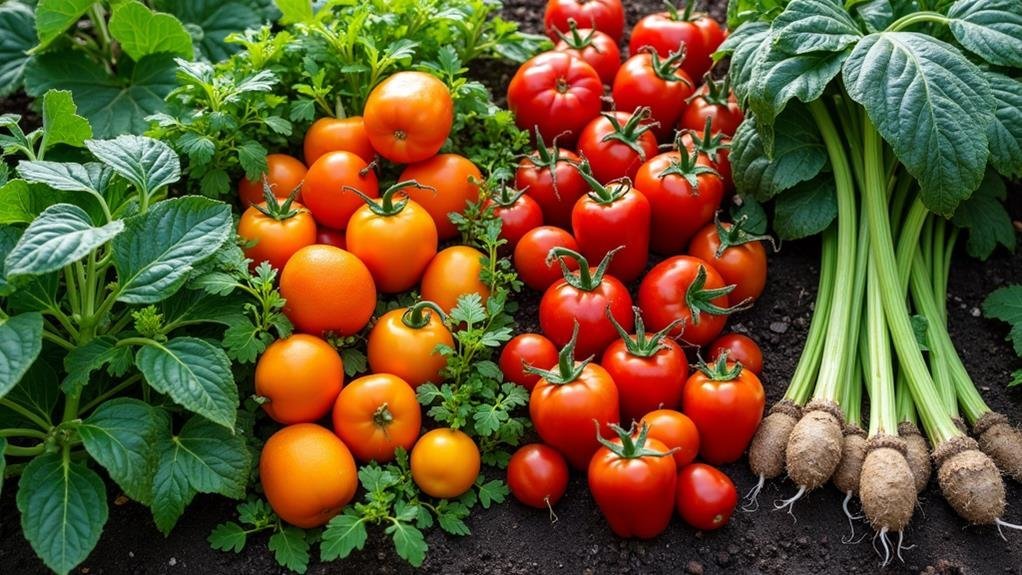
Selecting the right vegetables for each season is essential for a thriving garden. When you plan your garden, consider the climate and temperature variations throughout the year.
Cool-season vegetables, like kale, spinach, and broccoli, thrive in spring and fall, enjoying the crisp weather. On the other hand, warm-season crops, such as tomatoes, peppers, and beans, prefer the heat of summer.
You'll want to think about your personal preferences, too. If you love fresh salads, plant lettuce and radishes in the cooler months. For heartier meals, include root vegetables like carrots and beets, which can also be harvested in late fall.
Don't forget about succession planting! By staggering your plantings, you can extend your harvest season. For example, sowing a new batch of beans every few weeks means you'll have a continuous supply throughout summer.
Lastly, consider companion planting; some vegetables grow better together, helping to deter pests and improve yields.
With a little planning and foresight, you can choose the best vegetables for each season, ensuring a bountiful harvest and a vibrant garden year-round.
Happy gardening!
Ideal Planting Times
When planning your vegetable garden, timing is essential for ensuring a successful harvest. Each vegetable has its own ideal planting time, which is often tied to the last frost date in spring and the first frost date in fall. Knowing this will help you get the most out of your growing season.
For cool-season crops like lettuce, peas, and spinach, aim to plant them early in spring or late in summer for a fall harvest. These vegetables thrive in cooler temperatures and can often be sown directly into the ground.
On the other hand, warm-season crops, such as tomatoes, peppers, and cucumbers, should be planted after the last frost date when the soil has warmed up.
To be safe, check your local climate zone and consult planting calendars specific to your area. It's also a good idea to keep an eye on the weather forecasts, as unexpected frosts can occur.
By aligning your planting schedule with seasonal changes, you increase the chances of a bountiful harvest. Remember, the right timing makes all the difference in your garden's success!
Happy planting!
Companion Planting Strategies

Boost your vegetable garden's productivity by incorporating companion planting strategies. This method involves pairing plants that support each other's growth, enhancing flavor, and deterring pests. For instance, planting basil alongside tomatoes not only boosts the tomatoes' flavor but also repels harmful insects like aphids and whiteflies.
When planning your garden, consider the relationships between plants. Some plants, like carrots and onions, can benefit from each other by confusing pests. Others, such as beans, can fix nitrogen in the soil, improving the health of neighboring plants.
You should also be aware of plants that don't get along. For example, avoid pairing cabbage with strawberries, as they can compete for nutrients and stunt each other's growth.
Using companion planting strategies can create a more vibrant ecosystem in your garden. By selecting compatible plants, you'll not only promote growth but also reduce the need for chemical pesticides.
Seasonal Care and Maintenance
Understanding companion planting is just the beginning; maintaining your vegetable garden through the seasons is just as essential. You need to adapt your care routine as the weather changes.
In spring, focus on planting and soil preparation. Regularly check for pests and diseases, as warm weather can invite unwelcome guests.
As summer rolls in, watering becomes critical. Your plants are growing fast and need consistent moisture. Mulching can help retain soil moisture while preventing weeds from taking over.
Don't forget to prune your plants to encourage healthy growth and airflow.
Once fall arrives, it's time to harvest your bounty. Gather your veggies and start planning for the next planting cycle. Clean up dead plants and debris to deter pests in the winter.
In winter, your garden may seem dormant, but it still requires attention. If you live in a colder climate, consider covering your garden with mulch or frost cloth to protect the soil.
You can also plan your spring garden during this downtime, ensuring you're ready when the planting season returns. By staying proactive, you'll reap the rewards of your hard work throughout the year!
Adapting to Climate Changes
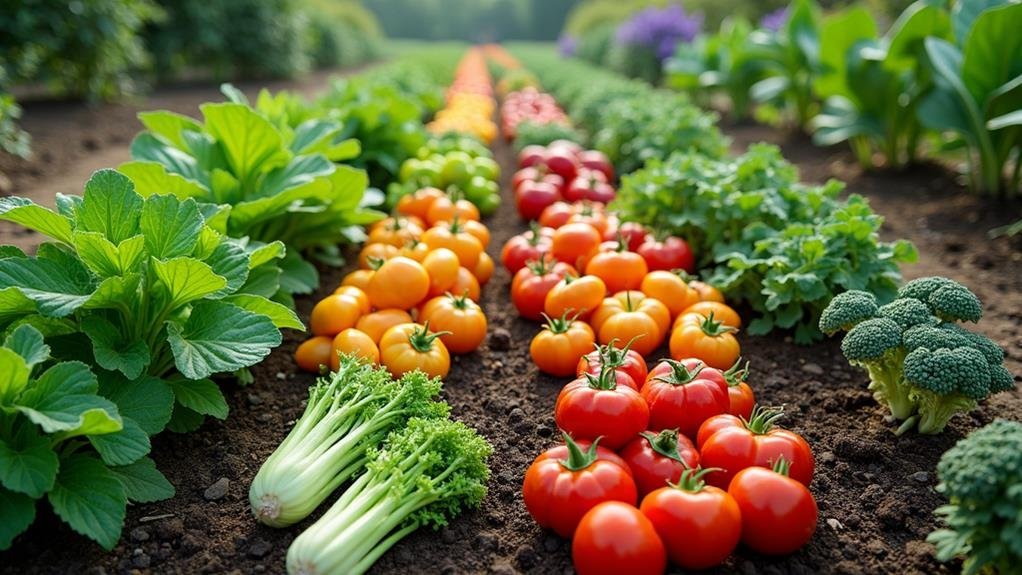
Adapting to climate changes requires keen observation and flexibility in your gardening approach.
You'll need to monitor temperature fluctuations, rainfall patterns, and the overall climate of your area. As seasons shift, what worked last year mightn't work this year. Be prepared to modify your planting schedule accordingly.
For instance, if you notice a warmer spring, consider starting your seeds indoors earlier. This gives your plants a jumpstart and helps guarantee a fruitful harvest.
Conversely, if you're facing unexpected frost, you might want to cover your young crops or delay planting until conditions improve.
Also, think about varying your plant choices. Some vegetables thrive in cooler conditions, while others prefer the heat. By planting a mix, you can better hedge against climate variability.
Make use of local resources, like community gardening groups or agricultural extensions, to stay updated on climate-related gardening tips. They can provide valuable insights tailored to your area.
In short, staying informed and adaptable will help you cultivate a successful vegetable garden, no matter how unpredictable the weather may be.
Your garden can flourish with a little planning and a watchful eye!
Conclusion
Planning your vegetable garden by season is key to achieving a thriving harvest. By understanding the growth cycles of your plants, you can choose the right vegetables and planting times, ensuring they flourish. Seasonal planting not only boosts productivity but also helps manage pests and enriches your soil. Embracing these strategies allows you to adapt to climate changes, making your garden resilient and enjoyable year-round. So, roll up your sleeves and get planting—your future self will thank you! By incorporating seasonal planting strategies into your gardening routine, you can take advantage of the unique benefits each time of year offers. For example, planting cold-hardy vegetables in the fall allows for a late harvest, while planting heat-loving vegetables in the spring maximizes their growth potential. By following these strategies, you can create a diverse and successful vegetable garden that provides a bountiful harvest throughout the year.

